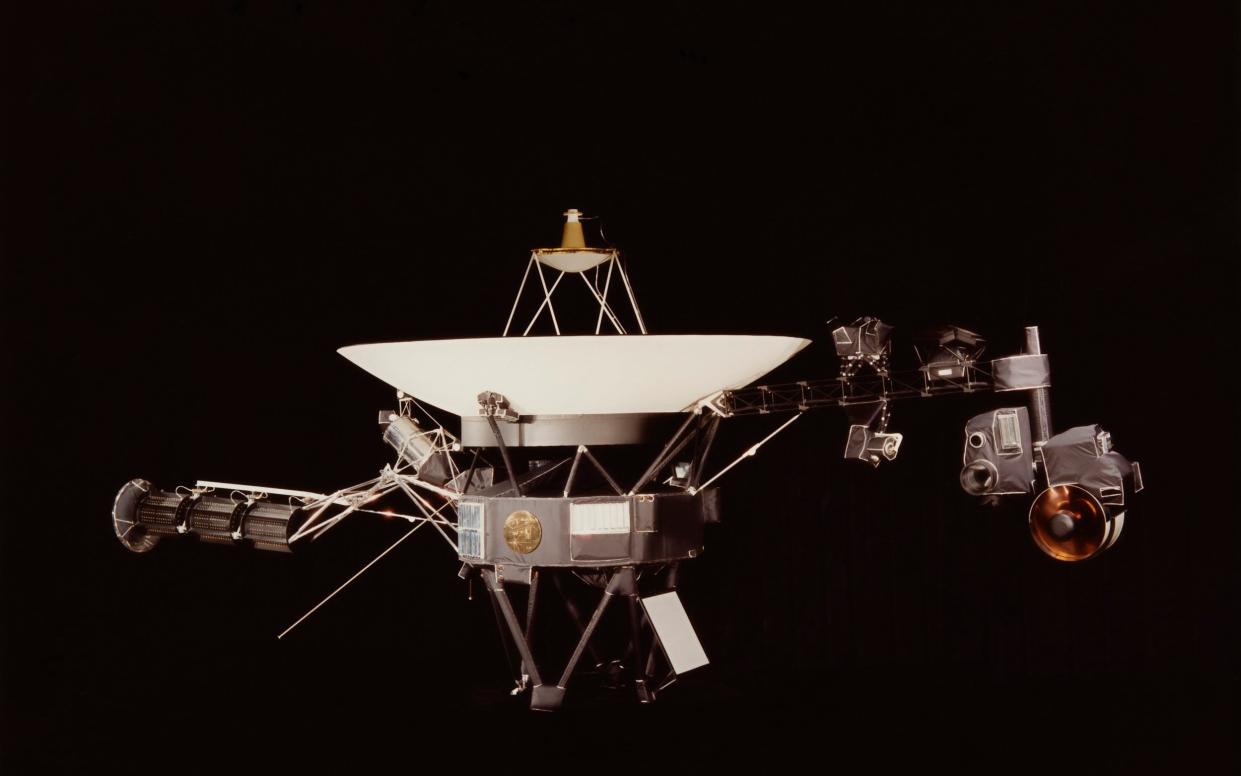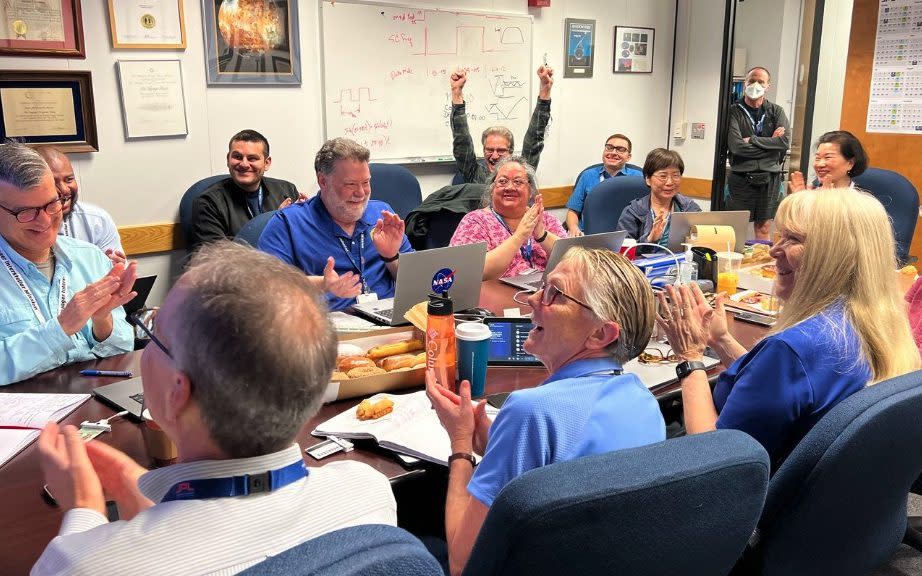Nasa engineers bring Voyager 1 back to life after interstellar glitch

When the loneliest spacecraft in the universe suffers a glitch, it is not just a case of switching it off and on again.
Voyager 1 - which in 2012 became the first human-made object to leave the Solar System - fell silent in November, meaning no science or engineering data was being sent back to Earth.
The probe was relaying crucial data about the ‘stuff between the stars,’ and the sudden loss of contact left Nasa stumped.
The spacecraft is 15 billion miles away speeding along at 32,000mph, meaning any commands sent from mission controllers take 22.5 hours to reach the little probe, and once they arrive, the engineering team must wait the same time again for a response.
To make matters worse, Voyager 1 was built in the 1960s and 1970s, meaning experts had to trawl the archives for decades-old paper documents written by engineers who had never anticipated the problems, or even knew the probe would travel so far.
But this week Nasa’s Jet Propulsion Laboratory (JPL) announced Voyager was operational again after receiving history’s most impressive and long-distance software patch.
Back in business
Bill Kurth, Research Scientist at the University of Iowa who has been a member of the Voyager science team since 1974, told The Telegraph: “We were all ecstatic to re-establish two-way communications with Voyager 1.
“The Voyager team at JPL has performed a miracle in recovering this magnificent explorer, making ongoing scientific discoveries possible.
“Now, we look forward to seeing the flow of scientific data from Voyager 1 in the coming weeks.”
The problem has taken Nasa more than five months to solve. The initial idea in March was to give the spacecraft a ‘digital poke.’ Like a dentist blowing puffs of air onto teeth to spot cavities, the Nasa team sent up a command asking the spacecraft to send a full memory readout back to Earth, so that any corrupted sections would stand out.
The ‘poke’ revealed fault was found in a chip in one of Voyager’s three onboard computers, called the flight data subsystem (FDS), which is responsible for packaging the science and engineering data before sending it back to Earth.
Instead of returning science, temperature, and engineering data, the glitch meant the computer was churning out repetitive gibberish of binary ones and zeros as if it were “stuck.”
Ingenious workaround
Because it was impossible to replace the faulty chip, Nasa came up with an ingenious workaround which involved inserting the affected code elsewhere in the FDS memory.
However, to make matters more complicated, no single location was large enough to hold the section of code in its entirety.
So they devised a plan to divide the affected code into sections and store those sections in new locations in the computer system’s memory while ensuring they could still talk to each other and work together.
After the software patch was sent, several dozen scientists and engineers gathered in a conference room at JPL in Pasadena, California to wait for the new signal. Some 45 hours after the fix went up, the team received confirmation it had succeeded.

Linda Spilker, project scientist for Nasa’s twin Voyager spacecraft told the Ars Technica website ‘you could have heard a pin drop’ in the room while waiting for the signal. When it finally came there were ‘tears of relief, high-fives and smiles.’
The team are unsure what caused the faulty chip, but think it may have been hit by an energetic particle from space or that it simply may have worn out after 46 years.
Humanity’s farthest object
Voyager 1 and her sister spacecraft Voyager 2 were launched in 1977 to study Jupiter and Saturn.
The mission has since been extended to explore the outermost limits of the Sun’s influence and beyond. Voyager 2, which also flew by Uranus and Neptune, is also on its way to interstellar space.
Voyager 1 is humanity’s most distant object and should it be intercepted by any intelligent alien civilization, it will find a gold-plated disc containing a series of multicultural greetings, songs, and photographs in 55 languages.
Among them are a message in Welsh and six now-extinct tongues.
The audio recordings include the sounds of footsteps across a polished floor, a human heartbeat and someone laughing. There is also the sound of a couple kissing and a mother with her child.
The disc even contains the brainwaves of Ann Druyan, the creative director of the Voyager Interstellar Message Project, at the moment she decided to marry her husband. She described it as the thoughts of someone falling in love.
Powered by a nuclear battery, or Radioisotope Thermoelectric Generator (RTG), the spacecraft are the two longest-operating spacecraft in history.
Voyager 1 is mainly studying cosmic rays, but the team are also excited about a curious anomaly in the data they have dubbed ‘pressure front 2’ - a jump in the density of plasma and the magnetic field around the spacecraft.
Nasa does not know if it is coming form the Sun or a phenomenon in interstellar space.
Dr. Kurth added: “I certainly had no idea that these two spacecraft would continue to work for over 46 years and continue to send back critical scientific information from beyond the Sun’s extended atmosphere or heliosphere.
“The Voyagers are making the only in situ observations of the ‘stuff between the stars’ ever, and likely these won’t be made again for 3 decades or more.
“We are learning about cosmic rays, thought to be from supernova explosions, the magnetic field surrounding the heliosphere, the density of plasma, and the fact that even beyond the heliopause, the Sun can influence the interstellar medium for tens of astronomical units.
“Each of these measurements leads to new questions about the Sun’s galactic environment.”


